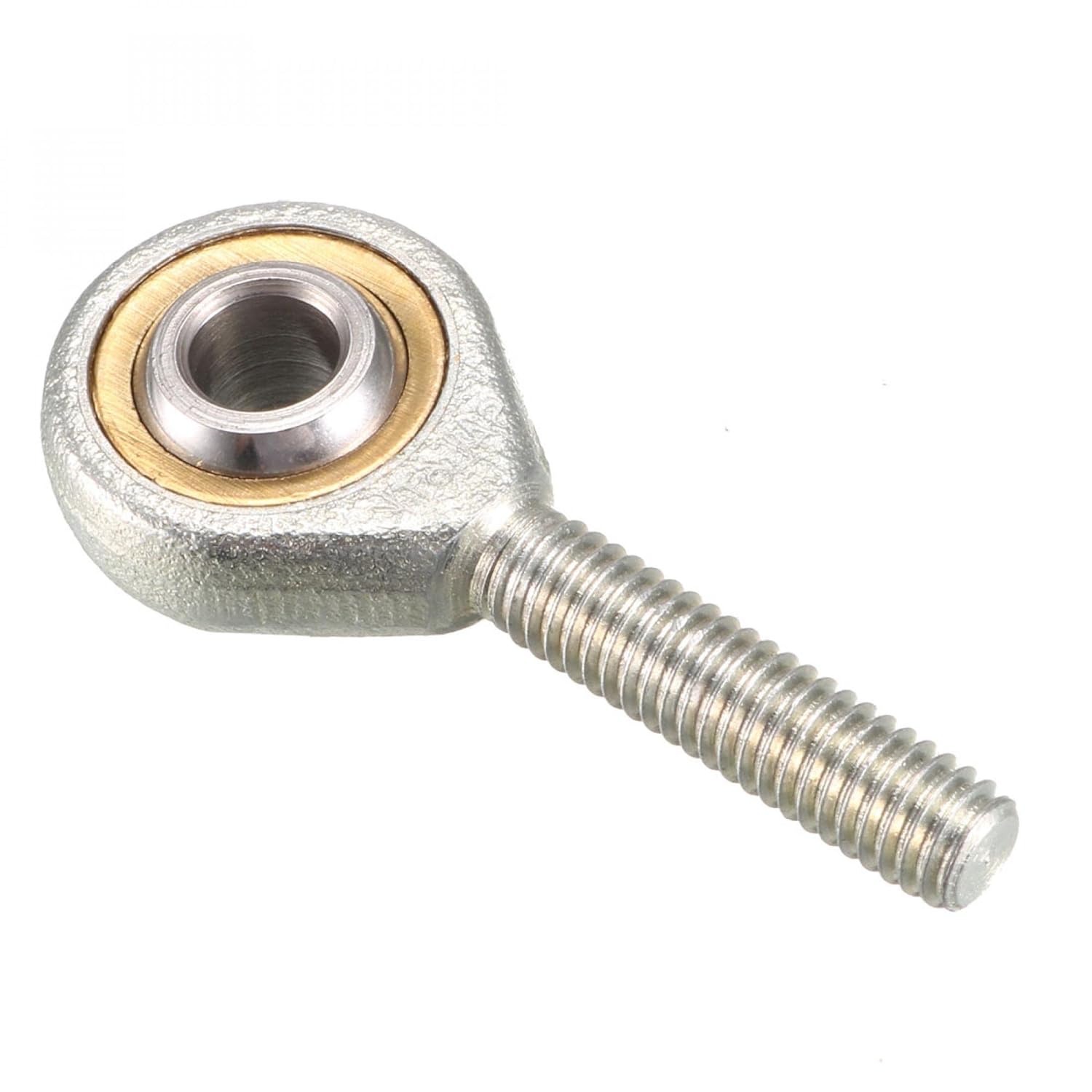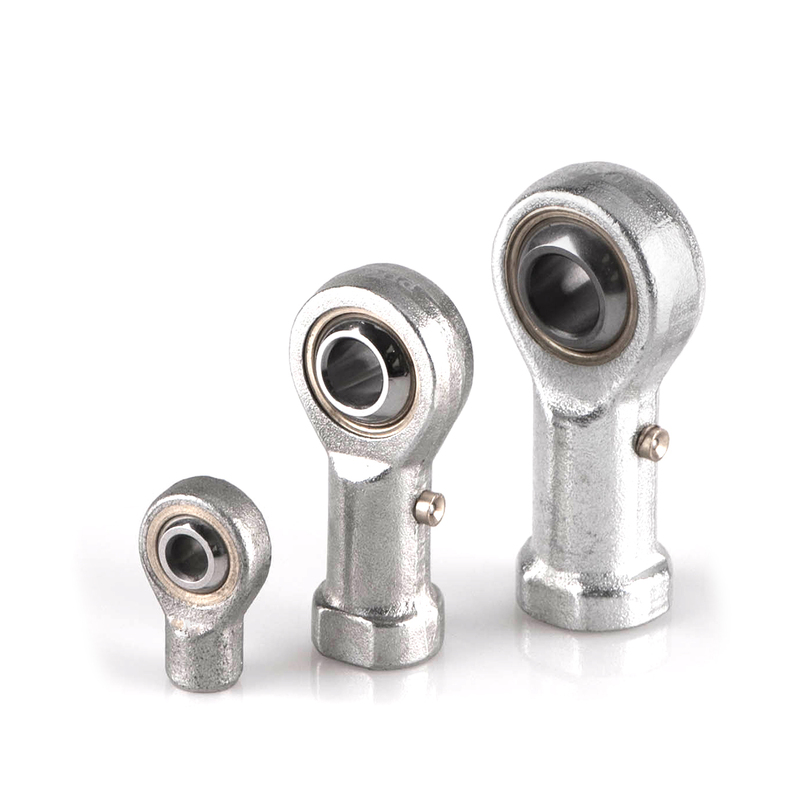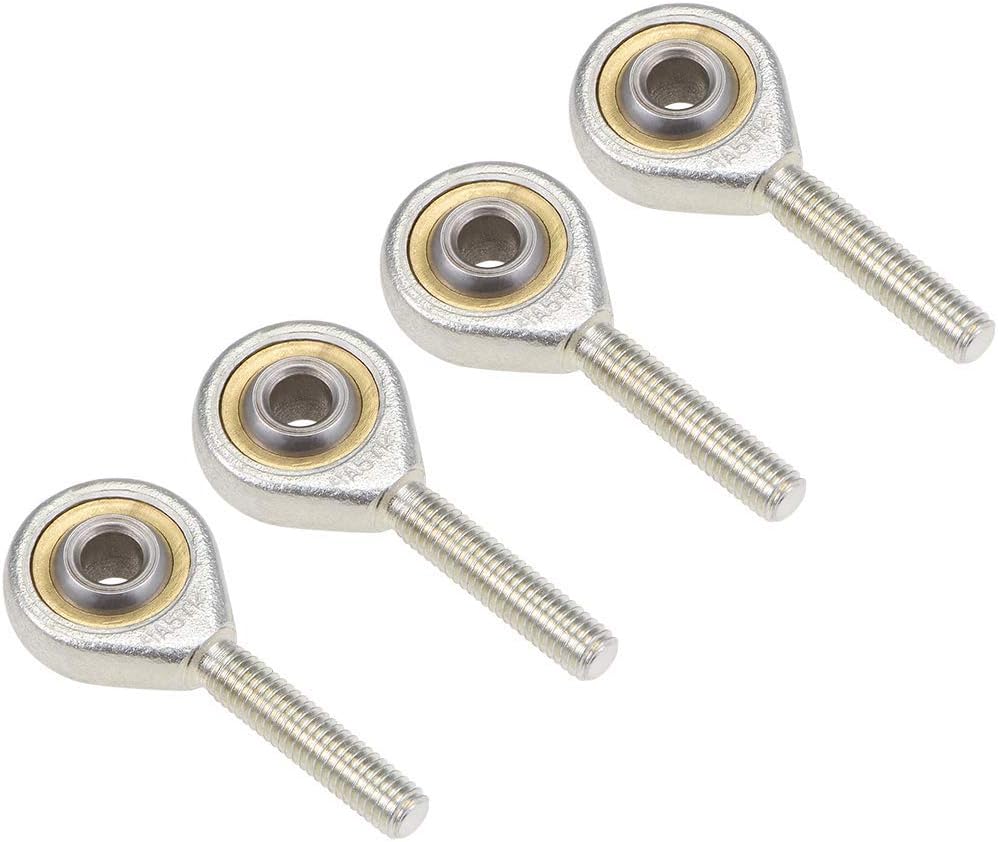
Differences Between Male and Female Threaded Rod End Bearings
Male and female threaded rod end bearings differ in their design and applications:
Male Threaded Rod End Bearings:
– Male rod end bearings have external threads on the shank or body of the bearing.
– They are typically used in applications where the bearing is mounted to a stationary component, and the threaded shank extends to connect with a mating part (e.g., a linkage or control arm).
– Male rod end bearings allow for easy adjustment or fine-tuning of the connection.
– These bearings are suitable for applications requiring controlled movement or positioning, where the bearing’s external threads facilitate precise adjustments.
Female Threaded Rod End Bearings:
– Female rod end bearings have an internal (female) threaded bore inside the housing.
– They are used when a bolt, stud, or shaft with external threads needs to be connected to the bearing’s housing.
– Female rod end bearings are often employed in applications where the bearing needs to rotate around a fixed shaft or bolt, providing articulation and misalignment capabilities.
– These bearings allow for the attachment of a variety of external components, making them versatile for different applications.
The choice between male and female threaded rod end bearings depends on the specific requirements of the application, including whether the bearing needs to be attached to a stationary part or connected to an external threaded component and the level of adjustability and articulation needed.

Enhancing Off-Road Vehicle Suspension with Rod End Bearings
Rod end bearings play a crucial role in enhancing the performance of suspension systems in off-road vehicles. Here’s how they contribute:
1. Articulation and Flexibility: Off-road vehicles encounter challenging terrains with varying obstacles. Rod end bearings provide articulation, allowing the suspension components to move independently. This flexibility ensures that each wheel can adapt to the terrain’s irregularities, improving traction and stability.
2. Load Distribution: In off-road conditions, vehicles often experience uneven loads due to rough terrain. Rod end bearings help distribute these loads across the suspension components, preventing excessive stress on any single part and reducing the risk of damage or failure.
3. Durability and Strength: Off-road environments are harsh, and suspension systems endure significant stress. Rod end bearings are designed for high-stress applications, providing the necessary strength and durability to withstand rugged conditions and maintain peak performance.
4. Precision Handling: Off-road vehicles require precise handling to navigate challenging terrain effectively. Rod end bearings maintain proper alignment, ensuring that the suspension geometry is consistent. This precision handling is vital for maintaining control over the vehicle, even on rough paths.
5. Reducing Vibration and Impact: Off-roading often involves encountering vibrations and impacts from uneven surfaces. Rod end bearings act as damping elements, reducing the transmission of these vibrations to the vehicle’s chassis. This helps improve ride comfort and minimizes the risk of structural damage.
6. Adjustable Suspension: Some off-road vehicles feature adjustable suspension systems that allow users to adapt to different terrains. Rod end bearings are integral to these systems, providing the flexibility needed to make real-time adjustments for optimal performance.
7. Maintenance and Serviceability: Off-road vehicles require regular maintenance, and the serviceability of suspension components is crucial. Rod end bearings are designed for ease of maintenance, making it simpler to inspect, lubricate, and replace them when necessary.
8. Versatility: Off-road vehicle suspension systems come in various designs. Rod end bearings are versatile components that can be integrated into different suspension types, including independent front suspensions, solid axle suspensions, and multi-link suspensions.
In summary, rod end bearings significantly enhance the performance of suspension systems in off-road vehicles by providing articulation, load distribution, durability, precision handling, vibration reduction, adjustability, and ease of maintenance. These features collectively ensure that off-road vehicles can tackle challenging terrains with confidence and reliability.

Design Principles and Functions of Rod End Bearings
Rod end bearings, also known as heim joints or rose joints, are essential components in various mechanical applications, where articulation and precise control of movement are required. These bearings are designed with specific principles and functions in mind:
Design Principles:
Rod end bearings consist of a spherical plain bearing, also known as a spherical plain bushing, within a housing. The design principles are as follows:
- Spherical Plain Bearing: The heart of a rod end bearing is a spherical plain bearing. This bearing allows the inner ring to tilt and rotate in multiple directions. It consists of an inner and outer ring with a sliding layer of material in between, often made from self-lubricating materials.
- Housing: The spherical plain bearing is housed within a protective casing, typically made of metal or other durable materials. The housing provides structural support and retains the bearing components.
- Threaded Shank: The outer part of the housing is often shaped as a threaded shank, allowing for easy attachment to various mechanical components, such as linkages or control arms.
- Lubrication Fittings: Many rod end bearings have provisions for lubrication fittings to ensure smooth articulation and reduce friction.
Functions:
Rod end bearings serve several crucial functions in mechanical systems:
- Articulation: Rod end bearings provide articulation, enabling components to pivot, swivel, and move in multiple directions. This function is vital in applications requiring flexibility and control over movement.
- Angular Misalignment Compensation: They can compensate for both static and dynamic angular misalignment. This is particularly useful in situations where components may not align perfectly due to varying factors like vibration or assembly tolerances.
- Load Transmission: Rod end bearings can transmit static and dynamic loads, making them suitable for applications involving force or load transfer. They are used in machinery and equipment where precise control of loads is essential.
- Precision Movement: These bearings provide precise control and movement, making them suitable for applications where accurate positioning of mechanical components is critical. This includes industries like aerospace and robotics.
- Corrosion Resistance: Many rod end bearings are designed with corrosion-resistant materials or coatings, making them suitable for use in harsh environments, such as marine and industrial settings.
- Durability: Rod end bearings are engineered for durability, allowing them to withstand challenging conditions and heavy-duty use. This ensures their reliability and longevity in demanding applications.
- Versatility: Rod end bearings are versatile components used across various industries, including automotive, aerospace, industrial machinery, and marine applications. Their adaptability and reliability make them valuable to engineers and designers.
These design principles and functions of rod end bearings make them indispensable in a wide range of mechanical systems where articulation, load-bearing capacity, and precise control are required.


editor by CX 2024-04-22